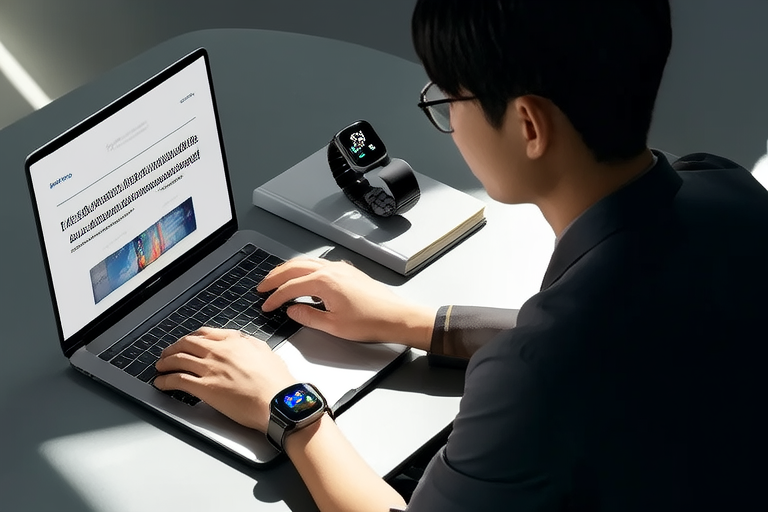The Future of Wearables: How Technology is Revolutionizing Personal Health
Introduction
In recent years, wearable technology has emerged as a pivotal force in reshaping personal health management. These compact devices, ranging from fitness trackers to advanced medical-grade wearables, are empowering individuals to monitor their health metrics in real-time and make informed decisions about their well-being. As healthcare systems worldwide grapple with rising costs and the growing burden of chronic diseases, wearables offer a promising solution by enabling proactive health management. By providing continuous data streams and actionable insights, these devices have the potential to revolutionize how we approach healthcare, shifting the focus from treatment to prevention. This article explores the current state of wearable technology, its impact on personal health, the challenges it faces, and the future possibilities it holds.
Current Innovations in Wearable Technology
Wearable technology has evolved significantly, offering an array of devices designed to cater to diverse health needs. Fitness trackers, one of the earliest forms of wearables, have become ubiquitous tools for monitoring physical activity, step counts, and calorie expenditure. These devices encourage users to adopt healthier lifestyles by setting daily goals and providing feedback on their progress.
Smartwatches, which combine traditional timekeeping with advanced health features, represent another major innovation. Modern smartwatches can track heart rate, sleep patterns, and even blood oxygen levels, offering users a comprehensive overview of their physiological state. Some models also include electrocardiogram (ECG) functionality, enabling early detection of irregular heart rhythms such as atrial fibrillation.
Medical-grade wearables take this a step further by providing clinical-level accuracy and reliability. These devices are often used in conjunction with healthcare providers to monitor patients with chronic conditions like diabetes, hypertension, or cardiovascular disease. For instance, continuous glucose monitors (CGMs) allow individuals with diabetes to track their blood sugar levels without frequent finger pricks, while wearable patches can monitor vital signs like temperature and respiratory rate over extended periods.
The widespread adoption of these technologies underscores their transformative potential. By making health data accessible and understandable, wearables are fostering a culture of self-awareness and accountability, encouraging users to prioritize their health proactively.
Advancements in AI, Machine Learning, and Biometric Sensors
The capabilities of wearable devices are being further enhanced by advancements in artificial intelligence (AI), machine learning, and biometric sensors. AI-powered algorithms can analyze vast amounts of health data collected by wearables, identifying patterns and trends that might otherwise go unnoticed. For example, machine learning models can predict potential health risks based on deviations in heart rate variability or sleep quality, alerting users to seek medical attention before symptoms worsen.
Biometric sensors are also becoming increasingly sophisticated, enabling wearables to capture more accurate and nuanced data. Innovations in sensor technology have led to the development of devices capable of measuring hydration levels, stress biomarkers, and even skin temperature. These advancements not only expand the range of health metrics that can be monitored but also improve the precision of existing measurements.
Furthermore, AI-driven insights are transforming how users interact with their wearables. Instead of simply displaying raw data, modern devices provide personalized recommendations tailored to individual health profiles. For instance, a wearable might suggest specific dietary changes or exercise routines based on the user’s activity levels and metabolic trends. This level of customization enhances user engagement and fosters long-term adherence to healthy habits.
Challenges and Concerns
Despite their many benefits, wearable technologies face several challenges that must be addressed to ensure their widespread adoption and effectiveness. One of the most pressing concerns is data privacy. Wearables collect sensitive health information, raising questions about how this data is stored, shared, and protected. Unauthorized access to such data could lead to misuse or exploitation, underscoring the need for robust cybersecurity measures and transparent data policies.
Accuracy remains another significant challenge. While wearables have made remarkable strides in precision, discrepancies between device readings and clinical measurements can still occur. Inconsistent results may lead to misinterpretation of health data, potentially causing unnecessary anxiety or complacency among users. To address this, manufacturers must prioritize rigorous testing and validation processes to ensure their devices meet high standards of reliability.
Accessibility is another critical issue. High costs and technological barriers can limit the availability of advanced wearables to certain demographics, exacerbating existing health disparities. Efforts must be made to develop affordable and user-friendly devices that cater to diverse populations, ensuring equitable access to the benefits of wearable technology.
Future Outlook for Wearables
The future of wearables is poised to be defined by groundbreaking innovations and expanded applications in healthcare. Emerging technologies such as flexible electronics, nanosensors, and augmented reality are expected to push the boundaries of what wearables can achieve. Flexible electronics, for instance, could enable the creation of ultra-thin, stretchable devices that conform seamlessly to the body, enhancing comfort and usability. Nanosensors, meanwhile, hold the potential to detect minute changes in biomarkers at the molecular level, facilitating early diagnosis of diseases like cancer or infections.
Wearables are also likely to play a crucial role in disease prevention and management. By continuously monitoring health metrics, these devices can identify early warning signs of conditions such as hypertension, sleep apnea, or mental health disorders. This proactive approach enables timely interventions, reducing the risk of complications and improving overall outcomes. Moreover, wearables can support chronic disease management by providing real-time feedback and reminders, helping patients adhere to treatment plans and lifestyle modifications.
Integration with telemedicine represents another exciting frontier for wearables. As remote healthcare becomes increasingly prevalent, wearables can serve as vital tools for bridging the gap between patients and providers. By transmitting health data directly to healthcare professionals, these devices facilitate virtual consultations, remote monitoring, and personalized care plans. This synergy between wearables and telemedicine has the potential to enhance accessibility and efficiency in healthcare delivery, particularly for underserved communities.
Conclusion
Wearable technology is ushering in a new era of personal health management, empowering individuals to take control of their well-being like never before. From fitness trackers and smartwatches to medical-grade devices, these innovations are transforming how we monitor and understand our health. Advancements in AI, machine learning, and biometric sensors are further amplifying their capabilities, enabling deeper insights and personalized recommendations.
However, challenges related to data privacy, accuracy, and accessibility must be addressed to fully realize the potential of wearables. Looking ahead, emerging technologies and expanded applications in disease prevention, management, and telemedicine promise to redefine the landscape of healthcare. As wearables continue to evolve, they hold the power to shift the paradigm from reactive treatment to proactive health maintenance, ultimately leading to healthier, more informed societies. The future of wearables is not just about technology—it is about empowering individuals to live longer, healthier lives.


